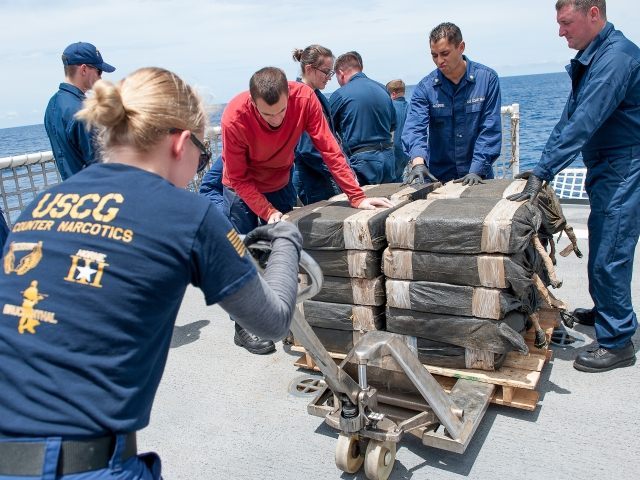The 1980s and early 1990s were very busy times for the US Coast Guard with regards to maritime drug interdiction in Caribbean waters. After the demise of Colombian cartels, much of that drug traffic shifted to land routes in Mexico and across our southwest border.
However, recent seizure data from the US Coast Guard is indicating that traffickers are once again focusing on maritime smuggling routes off the coast of Mexico and Central America.
Coast Guard admiral Paul Zukunft told the Associated Press that in the past year, Coast Guard anti-smuggling operations had netted 59 tons of narcotics off the shores of Mexico and Central America, more than the previous three years combined. During one particular mission that spanned from April through July 2015, three Coast Guard vessels and crew seized 32 metric tons of cocaine and two metric tons of heroin—worth roughly $1 billion on the street.
Zukunft indicated the contraband was seized during 30 separate interdictions of drug-running vessels, including two submarines and dozens of small outboard-powered boats called pangas. Historically, smugglers have used large-haul speedboats known as go-fasts, and still use them today but with less frequency. Open-bow pangas have become the vessel of choice for many smugglers off the coast of California in the last several years.
In mid-July 2015, the US Navy, Coast Guard, and Customs and Border Protection were all involved in an operation hundreds of miles off of El Slavador’s Pacific coast, after a US air patrol identified a semi-submersible vessel hauling drugs. Four men were apprehended and 8 tons of cocaine were seized, worth hundreds of millions of dollars on the street. While the drug submarine’s origin was unknown, it was suspected to be heading north towards US waters.
Despite being able to chalk this mission up as a success, challenges still lie ahead. “We can only act on 30 percent of known drug shipments in the Eastern Pacific and Caribbean,” ,” Zukunft said. “There is still work to be done.”
With regards to this shift in northbound drug smuggling, InsightCrime.org noted that drug flights in Colombia and Honduras—a key producer and transit nation for cocaine, respectively—have dropped to virtually zero, according to authorities, while increased security through Central America and along the southwest border has made overland smuggling operations more risky. Caribbean maritime routes are still popular, but there is ample evidence that the use of Pacific routes originating in Mexico and Central America is growing.
Sylvia Longmire is a border security expert and Contributing Editor for Breitbart Texas. You can read more about cross-border issues in her latest book, Border Insecurity: Why Big Money, Fences, and Drones Aren’t Making Us Safer.



COMMENTS
Please let us know if you're having issues with commenting.